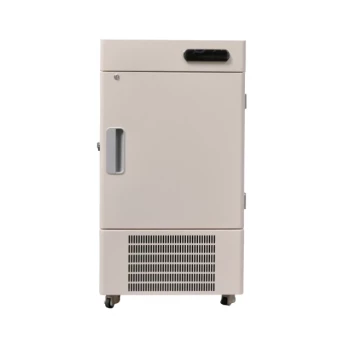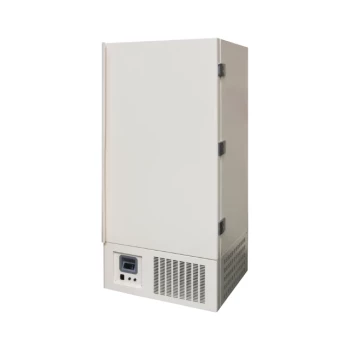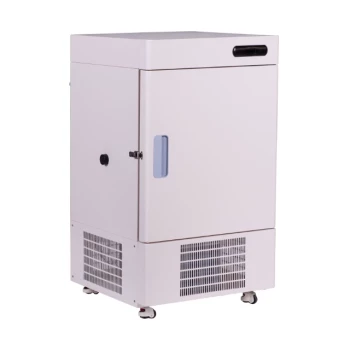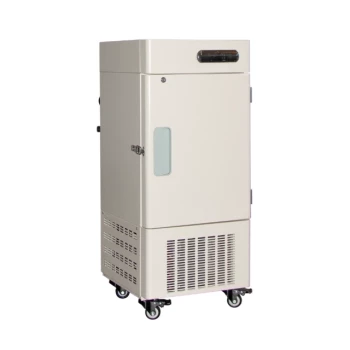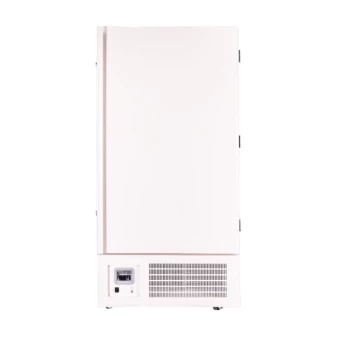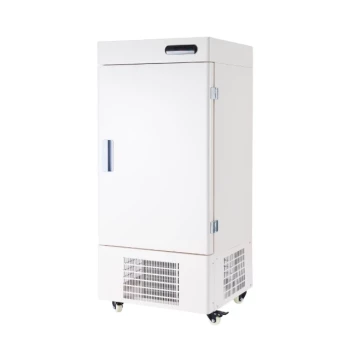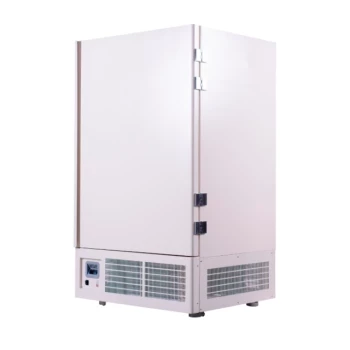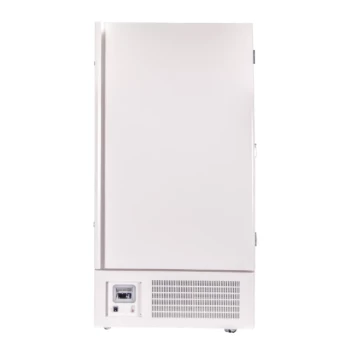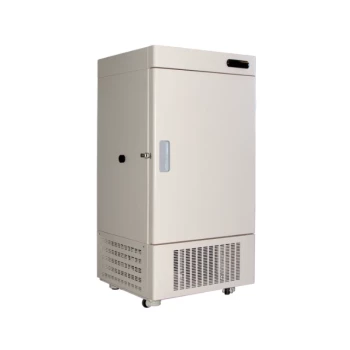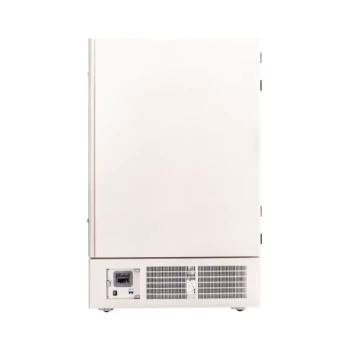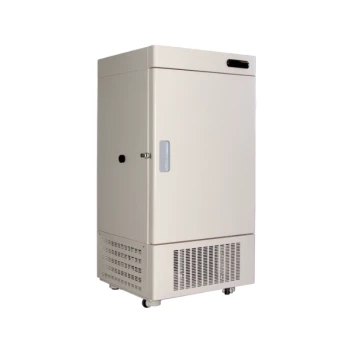For the vast majority of common biological samples, there are no significant scientific risks associated with storage at -70°C compared to -80°C. In fact, the historical standard for ultra-low temperature freezers was often -65°C or -70°C. For materials like nucleic acids, most proteins, bacteria, and viruses, storage at -70°C is well within established safety margins for maintaining long-term integrity.
The widespread use of -80°C is more a matter of convention than a strict scientific necessity for most applications. The greater, more practical risk to your samples often comes from the increased mechanical strain and higher chance of failure in freezers running constantly at their maximum setting.

Deconstructing the "-80°C Standard"
Many labs default to -80°C out of an abundance of caution, operating on a "colder is always better" assumption. However, understanding the context behind this number is key to making an informed decision.
The History of Ultra-Low Storage
Early ultra-low temperature (ULT) freezers were commonly set to -65°C or -70°C. The technology reliably achieved these temperatures, and they were proven effective for preserving a wide range of biological materials for long-term storage.
Which Samples Are Safe at -70°C?
Decades of research and practice have shown that the critical biological processes causing degradation are effectively halted at -70°C. This includes the vast majority of samples used in daily research.
Specifically, nucleic acids (DNA and RNA), most proteins, and common microbiological stocks like bacteria and viruses are considered stable and safe for long-term storage at -70°C.
The Real Risks in Ultra-Low Storage
The focus on a potential 10°C difference in storage temperature often obscures a much larger and more catastrophic risk: complete freezer failure.
The Risk of Degradation: Is 10°C Significant?
For most samples, the functional difference between -70°C and -80°C is negligible. The biochemical and enzymatic activities that degrade samples are already at a near-standstill at -70°C. The additional 10°C provides a diminishing return on sample stability while significantly increasing operational stress.
The Risk of Mechanical Failure
This is the most critical risk factor. Forcing a freezer to maintain -80°C, especially in warmer ambient environments, places maximum strain on its compressors. This leads directly to a shorter equipment lifespan and a higher probability of a sudden, catastrophic failure that could compromise all of its contents.
Understanding the Trade-offs
Choosing a setpoint is a strategic decision that balances perceived sample risk against tangible operational benefits and risks.
Benefit: Significant Energy and Cost Savings
Operating a ULT freezer at -70°C instead of -80°C can reduce energy consumption by 30-40%. This translates into substantial cost savings and a significant reduction in a lab's carbon footprint.
Benefit: Increased Freezer Longevity and Reliability
By reducing the strain on the cooling system, you directly prolong the life of the freezer. A more reliable freezer means less downtime for repairs and, most importantly, a lower risk of catastrophic sample loss due to equipment failure.
The Caveat: Unique or Ultra-Sensitive Samples
While most samples are safe, labs working with irreplaceable clinical trial samples, certain complex enzymes, or other highly sensitive and poorly characterized materials should exercise caution. For these specific cases, a risk assessment or a small pilot study may be warranted before implementing a lab-wide policy change.
Making the Right Choice for Your Lab
Base your decision on your specific samples, goals, and operational priorities.
- If your primary focus is storing common biologicals (DNA, RNA, proteins, cell lines): Shifting to -70°C is a low-risk, high-reward strategy that improves sustainability and reduces the chance of freezer failure.
- If your primary focus is long-term storage of irreplaceable or highly sensitive materials: Validate that -70°C is appropriate for your specific sample type before making a change, or consider dedicating one -80°C unit for only these materials.
- If your primary focus is operational stability and cost reduction: Moving to -70°C is one of the most effective actions you can take to extend freezer life and cut energy costs.
Ultimately, optimizing your freezer temperature is a strategic decision that balances minimal sample integrity risk against significant gains in equipment reliability and operational sustainability.
Summary Table:
| Aspect | -70°C Storage | -80°C Storage |
|---|---|---|
| Sample Safety (DNA, RNA, Proteins) | Safe for long-term storage | Conventionally used, but offers minimal added benefit for most samples |
| Energy Consumption | 30-40% lower | Standard, high energy use |
| Freezer Lifespan & Reliability | Higher reliability, longer lifespan | Higher mechanical strain, increased failure risk |
| Ideal Use Case | Common biological samples; cost & sustainability focus | Highly sensitive/irreplaceable samples (validate first) |
Optimize your lab's sample storage strategy with KINTEK!
Struggling with high energy costs, unreliable freezers, or uncertainty about the right storage temperature for your specific samples? KINTEK specializes in lab equipment and consumables, serving all your laboratory needs. We can help you assess your sample types, recommend the most reliable ultra-low temperature freezers, and implement a storage plan that balances sample integrity with operational efficiency and sustainability.
Contact our experts today via our Contact Form to discuss how we can enhance your lab's reliability and reduce costs.
Visual Guide
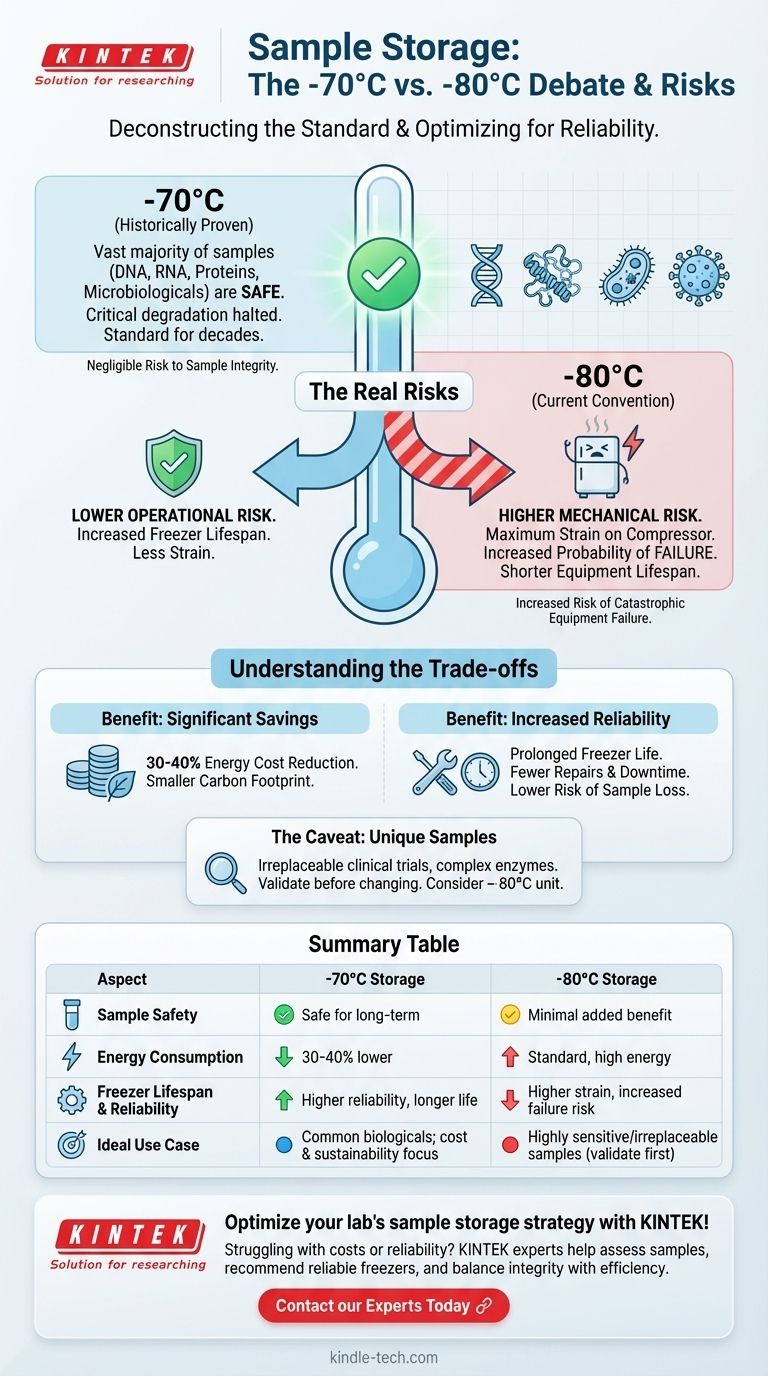
Related Products
- 58L Precision Laboratory Ultra Low Temperature Upright Freezer for Critical Sample Storage
- 608L Essential Laboratory Ultra Low Temperature Freezer For Critical Sample Preservation
- 408L Advanced Vertical Laboratory Ultra Low Temperature Freezer for Critical Research Material Preservation
- 108L Vertical Ultra Low Temperature ULT Freezer
- 28L Compact Upright Ultra Low Temperature Freezer for Laboratory
People Also Ask
- What temperature range do Ultra-Low Temperature (ULT) freezers typically maintain? Preserve Your Samples from -40°C to -86°C
- What are the common designs of ultra-low temperature freezers? Upright vs. Chest Models for Your Lab
- What factors should be considered when selecting an ultra-low temperature freezer? Ensure Sample Integrity and Long-Term Value
- What advantages do ultra-low temperature freezers offer? Ensure Long-Term Sample Integrity and Reliability
- What are ultra low temperature freezers used for? Preserving Critical Biological Samples for Decades
